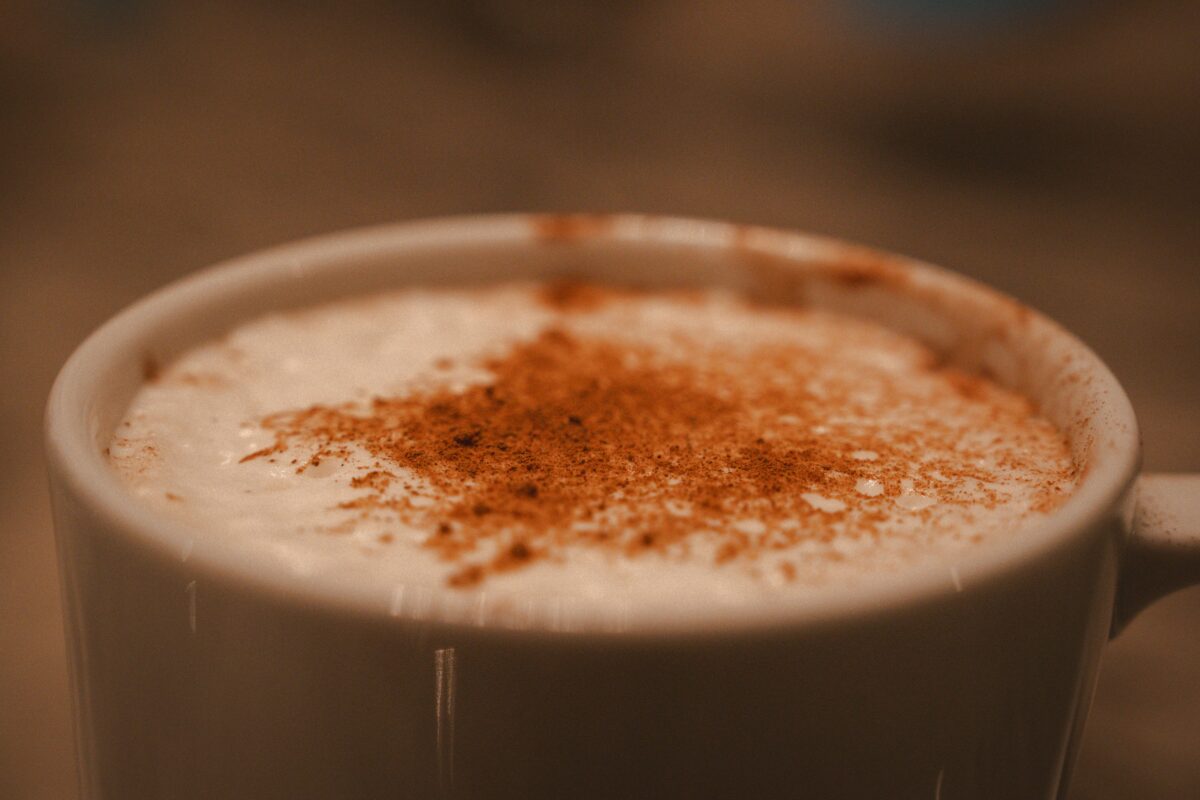How to Make a Cappuccino: Complete Guide to Ingredients, Equipment, and Techniques
A cappuccino is a balanced espresso drink composed of espresso, steamed milk, and a layer of milk foam, offering a rich, textured coffee experience that can be reproduced at home with practice. This guide teaches you how to make a cappuccino from ingredient selection through equipment choices, step-by-step preparation, milk-frothing technique, and troubleshooting so you can consistently achieve velvety microfoam and a well-balanced cup. Many home baristas struggle with uneven extraction, unstable foam, or milk that scalds; this article addresses those problems with practical metrics, clear technique cues, and quick fixes. You will find concise definitions, a brief history, precise ratios, tables comparing equipment and milks, stepwise instructions optimized for featured snippets, and troubleshooting flows for common issues. The organization follows the exact headings below so you can jump to specific topics: the cappuccino definition and ratio, essential ingredients, equipment needs, step-by-step preparation, mastering milk frothing, popular variations, and side-by-side comparisons with other espresso drinks. Throughout, keywords like how to make a cappuccino, milk steaming temperature, frothing wand technique, and coffee grind size for espresso are used naturally to support discoverability and practical learning.

What Is a Cappuccino? Definition, History, and Key Ingredients
A cappuccino is an espresso-based coffee beverage traditionally composed of one-third espresso, one-third steamed milk, and one-third milk foam, creating a harmony of crema, liquid milk, and airy foam. This structure yields a textured mouthfeel where the crema and espresso provide depth, and the foam adds volume and visual appeal, making the drink distinct from milkier beverages. Historically, the cappuccino evolved in Italy and was influenced by Viennese frothy coffee traditions, with modern interpretations codifying the 1:1:1 ratio and cup sizes used in cafés worldwide. Understanding these fundamentals helps home baristas aim for correct balance and texture when selecting equipment and milk, and it sets expectations for taste and presentation.
What Are the Traditional Components of a Cappuccino?
The traditional components of a cappuccino are the espresso shot, steamed milk, milk foam, and crema, each contributing a specific textural or flavor role. Espresso provides the concentrated coffee flavor and crema; steamed milk adds sweetness and body; microfoam creates silkiness and volume; crema binds flavors and offers aromatic notes. Together these parts produce the cappuccino’s signature contrast between bold coffee and light foam, making technique in extraction and frothing critical for success. Recognizing each component clarifies where to focus improvements—grind and tamp for espresso, and wand position and timing for foam.
How Did the Cappuccino Originate? A Brief History
The cappuccino’s origins trace to European coffeehouse culture, with early frothy coffee drinks appearing in Vienna and evolving in Italy into the cappuccino familiar today. Post-war espresso technology and café culture refined preparation methods and popularized the layered approach of espresso, steamed milk, and foam. Regional preferences shaped cup size and milk texture, with Italian cafés favoring smaller, balanced cups and other locales expanding portion sizes and milk ratios. Understanding this history explains why traditional technique emphasizes balance and why contemporary variations exist for differing tastes.
What Is the Ideal Ratio of Espresso, Milk, and Foam?
The ideal ratio for a classic cappuccino is approximately one-third espresso, one-third steamed milk, and one-third milk foam, which typically fits a 150–180 ml cup for a single or double-shot variation. For a single-shot cappuccino that uses 25–30 ml of espresso, aim to add roughly the same volume of steamed milk and the same of foam to respect the 1:1:1 proportion. Adjustments are normal—double-shot cappuccinos increase espresso volume while keeping the same textural balance—but the ratio guides extraction strength and milk texturing so the drink remains neither too milky nor too dry. Using the ratio as a practical measure helps when scaling recipes for cup size, personal taste, or different milk choices.
Which Ingredients Are Essential for Making a Perfect Cappuccino?
Essential ingredients for a cappuccino are freshly roasted coffee beans ground for espresso, clean cold milk selected for frothing properties, filtered water for extraction, and optional garnishes such as cocoa or cinnamon for finishing touches. Ingredient quality and fresh grinding determine extraction clarity, while milk composition (fat and protein) influences microfoam stability and sweetness. Choosing beans with a medium-dark roast profile and uniform freshness helps create a balanced crema and flavor that complements textured milk. When considering supply options and ongoing maintenance of home coffee setups, remember the broader objective: To provide a comprehensive range of high-quality coffee products and services, leading customers to discover, purchase, and maintain their coffee solutions.
How to Choose the Best Coffee Beans for Espresso?
Choosing beans for espresso hinges on roast level, origin characteristics, and freshness, because extraction concentrates flavors and emphasizes roast development. Medium-dark roasts often balance acidity and body, producing caramelized sugars that pair well with milk, while single-origin beans can introduce distinctive notes that may or may not suit milk-based drinks. Freshness matters—grind immediately before brewing and store beans in an opaque, airtight container away from heat to maintain aromatic oils and crema-producing compounds. For home use, test small batches and adjust grind size and dose to match your machine’s extraction profile.
What Types of Milk Work Best for Cappuccinos?
Whole milk typically produces the most stable, velvety microfoam due to higher fat and protein content, which gives sweetness and body when steamed; semi-skimmed can work but yields lighter mouthfeel. Among plant-based alternatives, barista-formulated oat milk is widely favored for microfoam due to its blend of starches and proteins that mimic dairy behavior, while soy and almond can froth but may require technique adjustments. Temperature control and freshness of milk influence texture: always start with cold milk and steam to the 60–65°C range for optimal sweetness and foam stability. Knowing each milk’s frothing behavior lets you choose the best option for taste and presentation.
What Optional Toppings Enhance a Cappuccino?
Optional toppings like a light dusting of cocoa powder, a pinch of cinnamon, or a few chocolate shavings enhance aroma and visual appeal without overpowering the espresso. Use sparing amounts—typically a 1/8 to 1/4 teaspoon—to complement rather than mask the coffee’s flavor, and consider pairing darker roasts with cocoa and lighter roasts with delicate spices. Toppings can also help define a signature touch for home presentations or small gatherings, improving perceived quality. Applying garnishes with a fine sieve or stencil delivers consistent, attractive finishes.

What Equipment Do You Need to Make a Cappuccino at Home?
To make a cappuccino at home you need an espresso machine with a steam wand (or an alternative frothing tool), a grinder that produces a consistent fine espresso grind, and a stainless-steel milk pitcher for steaming and pouring. Additional accessories—tamper, scale, thermometer, and cleaning brushes—improve consistency and longevity of equipment, while water quality influences extraction and machine health. Different users benefit from different machine classes: manual and semi-automatic machines offer control for learning extraction, whereas automatic machines prioritize convenience. Understanding the trade-offs between types helps you select equipment that fits skill level, budget, and desired maintenance routines.
How Does an Espresso Machine Work for Cappuccino Making?
An espresso machine extracts coffee by forcing near-boiling water through compacted coffee grounds at pressure, producing concentrated espresso and crema; the steam wand injects steam and air to heat and texture milk. Key components include the portafilter for holding the puck, a boiler or heat-exchange system for heating water, and a pump to create pressure, all of which affect extraction temperature stability and crema quality. Proper extraction depends on consistent dose, grind size, tamp pressure, and stable water temperature; the steam wand’s technique controls aeration and texturing for microfoam. Mastering these elements allows you to produce espresso and milk that marry into a balanced cappuccino.
Introductory comparison of common machine types for home baristas.
| Espresso Machine Type | Characteristic | Best Use Case |
|---|---|---|
| Manual / Lever | Full control of extraction pressure and timing | Experienced hobbyists seeking precision |
| Semi-automatic | Pump-driven extraction with manual shot control | Home baristas balancing control and convenience |
| Automatic / Super-automatic | Programmable dosing and automatic milk systems | Users prioritizing speed and consistency |
What Are the Best Milk Frothing Tools?
Milk frothing tools include steam wands, handheld electric frothers, standalone automatic milk frothers, and the French press method for manual texturing, each with trade-offs in control and foam quality. Steam wands yield the best microfoam when used correctly and are standard on espresso machines; handheld frothers and electric pitchers are budget-friendly alternatives that can produce acceptable foam but less texture control. Choose a tool matched to your goals: professionals and enthusiasts benefit most from steam wand practice, while casual drinkers may prefer the simplicity of an electric frother. Regular cleaning and proper technique extend tool life and improve foaming results.
Which Accessories Improve Your Cappuccino Experience?
Accessories such as a precision tamper, digital scale, milk thermometer, and a good-quality milk pitcher support repeatable espresso shots and consistent steaming, reducing variability in the cup. A scale ensures accurate dose and yield, the tamper creates an even puck for uniform extraction, and a thermometer helps hit the 60–65°C steaming range without scorching milk. Cleaning brushes, descaling solutions, and blind filters safeguard machine performance and extend lifespan, which directly affects espresso flavor. Investing in a few well-chosen accessories improves consistency and reduces the time spent troubleshooting problems.
How to Make a Cappuccino Step-by-Step: From Espresso to Foam
Making a cappuccino involves three main phases: prepare and extract espresso, steam and texture milk to microfoam, then combine and finish with foam and garnish for presentation. Executing each phase with specific metrics—dose, grind, extraction time, and milk temperature—produces consistent results. The steps below are organized for featured-snippet clarity, offering direct, actionable instructions you can follow on a first try. A compact equipment tip: using a machine with a reliable steam wand or a high-quality electric frother will make achieving microfoam far easier for home baristas.
Follow these numbered steps for a standard cappuccino:
- Prepare the portafilter: Dose 18–20 g for a double shot, distribute and tamp evenly.
- Extract espresso: Aim for a 25–30 second extraction yielding 30–40 ml per shot with rich crema.
- Steam milk: Start with cold milk, position the wand to introduce a small amount of air, then texture to 60–65°C for microfoam.
- Combine and finish: Pour milk into the espresso, start high then lower to integrate crema and finish with foam on top.
These procedural steps provide a clear workflow from setup to serving, and mastering each stage reduces common faults such as watery crema or milk powder or large unstable bubbles.
How Do You Pull the Perfect Espresso Shot?
Pulling a perfect espresso shot requires consistent dose, correct grind size, even distribution, firm tamp, and a target extraction time and yield that match your machine and coffee. For a double shot use about 18–20 g dry dose, adjust grind so extraction occurs in 25–30 seconds, and aim for 30–40 ml yield for balanced strength; visual cues such as a steady stream and golden crema indicate correct extraction. If the shot tastes sour, adjust finer grind or longer extraction; if bitter, try coarser grind or shorter time. Maintaining a clean group head, fresh beans, and stable water temperature supports repeatable results.
How to Steam and Froth Milk for Velvety Microfoam?
Steaming milk to velvety microfoam involves two phases: controlled aeration to incorporate tiny bubbles, followed by texturing to create homogeneous, glossy foam at the recommended 60–65°C temperature. Start with cold milk in a chilled pitcher, introduce air briefly at the start (the “stretch”) then submerge the wand to swirl and heat while monitoring temperature with a thermometer and wrist cues. Seek a silky, paint-like microfoam with no visible large bubbles; stop steaming when the pitcher is warm to touch and thermometer reads 60–65°C. Practice and small adjustments to wand position and pitch of the pitcher yield consistent microfoam across milk types.
Optimisation of Milk Microfoam Formation via Steam Frothing
This study investigates the evaluation of microfoam produced from processed dairy milk, utilising the steam-frothing function of espresso machines. The evaluation considers variations in temperature (30 – 80°C), milk type (pasteurised or UHT), and whey protein content. Foam characteristics, specifically foam stability, viscosity, and bubble size distribution, exhibited noticeable variation dependent on the milk processing type and steam heating temperature. Foams generated from pasteurised whole milk demonstrated greater stability. Bubbles within pasteurised milk foam were more evenly distributed, particularly at a temperature of 60°C. The optimal final temperature for steam frothing was observed to be within the range of 50°C to 60°C. Effect of milk processing and steam frothing conditions on microfoam formation., 2023
How to Combine Espresso and Milk for the Ideal Cappuccino?
Combining espresso and milk requires a controlled pour that integrates steamed milk with espresso while preserving a top layer of foam, using cup tilt and pouring height to manage mixing. Begin pouring from about 6–8 cm above the cup to sink milk beneath crema, then lower the pitcher to allow foam to settle on top for visual layering; this technique balances liquid milk and foam exactly. Maintain a steady wrist and adjust flow rate to create a uniform drink where crema remains visible beneath the foam cap. Practice with small pours until you reliably achieve the classic 1:1:1 balance.
How to Finish Your Cappuccino with Foam and Garnish?
Finishing the cappuccino focuses on foam placement, simple latte art, and a light garnish to enhance visual appeal and aroma without masking coffee flavor. Use the final low pour to deposit foam centrally and create a simple heart or rosette if desired, keeping motions deliberate to avoid breaking crema; alternate smaller wrist motions for more intricate shapes once comfortable. A light dusting of cocoa or cinnamon adds aroma and a professional touch—apply sparingly to complement the espresso. To support ongoing enjoyment and equipment upkeep, remember the broader goal: To provide a comprehensive range of high-quality coffee products and services, leading customers to discover, purchase, and maintain their coffee solutions.
How Can You Master Milk Frothing Techniques for Cappuccinos?
Mastering milk frothing requires understanding the differences between microfoam and dry foam, precise temperature control, and a troubleshooting mindset for common issues like large bubbles or foam collapse. Microfoam is key to a cappuccino’s texture; learning the mechanics of the steam wand and developing consistent timing will produce small, stable bubbles and glossy milk. Temperature plays an essential role in sweetness and foam stability—use the 60–65°C target and sensory cues such as a slightly warm pitcher handle. Practicing routine diagnostics and adjustments converts problems into repeatable solutions and refines your frothing technique.
What Is Microfoam and How Is It Different from Dry Foam?
Microfoam is a fine-textured steamed milk where air is incorporated as microscopic bubbles, producing a silky, glossy texture that integrates smoothly with espresso; dry foam is airy and coarse with larger bubbles and a stiffer mouthfeel. Microfoam enhances mouthfeel and allows simple latte art, while dry foam tends to sit on top as a bulky cap and can separate from liquid milk more quickly. Achieving microfoam depends on brief, controlled aeration and aggressive texturing to fold bubbles into a homogenous mass. Recognizing the difference helps you choose the right technique for cappuccino versus drinks that require drier foam.
What Is the Optimal Milk Temperature for Frothing?
The optimal milk temperature for cappuccino frothing is 60–65°C, which maximizes perceived sweetness and maintains foam stability without scalding proteins that create cooked flavors. Use a thermometer or your wrist: the pitcher should feel hot but not uncomfortably so, and stop steaming just before it reaches boiling to preserve lactose sweetness and protein structure. Overheating beyond 70°C denatures proteins, reduces foam quality, and produces a flat, burnt taste; underheating yields lukewarm drinks lacking texture and sweetness. Consistent temperature control is one of the fastest ways to improve repeatable cappuccino quality.
Optimisation of Milk Microfoam Formation via Steam Frothing
This study investigates the evaluation of microfoam produced from processed dairy milk, utilising the steam-frothing function of espresso machines. The evaluation considers variations in temperature (30 – 80°C), milk type (pasteurised or UHT), and whey protein content. Foam characteristics, specifically foam stability, viscosity, and bubble size distribution, exhibited noticeable variation dependent on the milk processing type and steam heating temperature. Foams generated from pasteurised whole milk demonstrated greater stability. Bubbles within pasteurised milk foam were more evenly distributed, particularly at a temperature of 60°C. The optimal final temperature for steam frothing was observed to be within the range of 50°C to 60°C. Effect of milk processing and steam frothing conditions on microfoam formation., 2023
How to Troubleshoot Common Milk Frothing Problems?
Troubleshoot by identifying the problem, its probable cause, and a direct corrective action in a concise diagnostics format that is easy to apply during steaming. For example, big bubbles likely indicate excessive aeration or wand too high—resolve by lowering wand tip and reducing initial air intake, then re-texture. Lukewarm milk suggests inadequate steam power or short steaming time—ensure steam tip is clear and maintain proper pitch and depth. Separation or collapsing foam often results from overheating or expired milk—cool slightly and use fresher milk, monitoring temperature closely. Regularly purging and cleaning the steam wand prevents many common faults.
Troubleshooting checklist for common frothing faults:
- Big bubbles: Lower wand tip and decrease initial aeration.
- Watery foam: Increase texturing time to mix air into milk.
- Scalded taste: Stop steaming at 60–65°C; avoid overheating.
This checklist gives rapid fixes so you can return to consistent microfoam quickly and improve overall cappuccino quality.
What Are Popular Cappuccino Variations and Customization Options?
Cappuccino variations include iced versions, flavored options using syrups or spices, and methods for making cappuccino-style drinks without an espresso machine, each adapting the basic ratio and texture to different contexts. Flavorings should be balanced—start with small syrup doses or a light spice sprinkle to complement the espresso rather than overpower it. For dairy-free or convenience needs, adapt technique and expectations: some plant milks require different aeration and may yield slightly different foam texture. Understanding these variations lets you expand repertoire while maintaining core cappuccino principles.
How to Make an Iced Cappuccino at Home?
An iced cappuccino balances concentrated cold espresso, chilled textured milk, and a light foam cap without diluting flavor excessively from ice. Brew very strong espresso or use cold brew concentrate, chill immediately, then top with cold frothed milk produced using an electric frother or by shaking milk vigorously in a sealed container to incorporate air. Add ice last and pour gently to preserve foam; consider using fewer ice cubes or chilled glasses to reduce dilution. This approach maintains the cappuccino’s layered texture while adapting it for warm-weather drinking.
What Flavored Cappuccinos Can You Try?
Flavored cappuccinos include additions such as vanilla, caramel, or hazelnut syrups and spice accents like cinnamon or nutmeg; dosing should be conservative to maintain espresso character. Start with 5–10 ml (about 1/4 to 1/2 teaspoon) of syrup for a single-serving cup and adjust to taste, pairing darker roasts with caramel or chocolate and lighter roasts with citrus or floral syrups. Barista-style implementations often layer syrup under the espresso to integrate flavor evenly when milk is added. Flavoring experiments let you create signature variations while respecting balance.

Can You Make a Cappuccino Without an Espresso Machine?
You can make a cappuccino-style drink without an espresso machine using a strong stovetop Moka pot or concentrated brewed coffee together with a handheld frother, French press, or jar-shaking technique to aerate milk. The result won’t perfectly replicate high-pressure espresso crema but can approximate a cappuccino’s balance of strong coffee, textured milk, and foam. Use concentrated coffee, cold milk, and vigorous frothing to produce stable foam and combine carefully to retain separation. This method offers a practical alternative for homes without espresso machines while setting realistic expectations for texture and crema.
How Does a Cappuccino Compare to Other Coffee Drinks?
A cappuccino differs from a latte and a flat white primarily in milk ratio, foam volume, and cup size: cappuccino features roughly equal parts espresso, steamed milk, and foam; latte is milk-forward with more steamed milk and thin microfoam; and flat white emphasizes liquid milk with a thin, velvety microfoam layer in a smaller cup. These structural differences shape mouthfeel—cappuccino is foam-forward and textured, latte is creamier and milk-dominant, flat white is smooth and espresso-centered. Selecting between them depends on preferences for foam vs milk-forward taste and perceived strength, and technique modifications align steaming and pouring to each drink’s goals. Side-by-side comparisons help choose the right beverage for taste, texture, and occasion.
Intro to comparison table between cappuccino, latte, and flat white.
| Drink | Espresso Ratio | Milk Ratio | Foam Type | Typical Cup Size |
|---|---|---|---|---|
| Cappuccino | 1/3 | 1/3 | Thick microfoam cap | 150–180 ml |
| Latte | 1/6–1/4 | Majority steamed milk | Thin microfoam | 240–360 ml |
| Flat White | 1/3–1/2 | Mostly liquid milk | Very thin microfoam | 150–200 ml |
What Are the Differences Between a Cappuccino, Latte, and Flat White?
The cappuccino’s defining feature is its thicker foam cap and equal balance of espresso, milk, and foam, while a latte focuses on milk volume with a silky microfoam and a flat white offers concentrated espresso with a thin, velvety microfoam. Preparation differences are largely in steaming goals and pouring technique: lattes require more steamed milk and gentler texturing; flat whites prioritize minimal foam for direct espresso expression. Taste preferences—whether prioritizing espresso intensity or milk creaminess—determine which drink suits an individual. Understanding these differences helps you tailor steaming, pouring, and dosage to match the target beverage.
How Does Milk Frothing Vary Across These Drinks?
Frothing goals differ: cappuccino needs a thicker foam cap with visible body; latte requires integrated thin microfoam for creaminess and latte art; flat white demands the finest microfoam for seamless integration with espresso. Adjust aeration time and wand depth accordingly: more initial aeration for cappuccino’s foam, minimal aeration and aggressive texturing for flat white. Temperature targets remain similar (60–65°C) but the volume of milk and foam relative to espresso changes texturing focus. Practicing these variations refines your ability to switch between drinks while preserving quality.
Which Drink Should You Choose Based on Taste and Texture Preferences?
Choose a cappuccino if you prefer a balanced cup with a strong espresso presence capped by a prominent, airy foam; choose a latte if you want a creamier, milk-forward drink with subtle espresso notes; choose a flat white if you want a concentrated espresso taste with silky, integrated microfoam. Preferences should guide dose selection and steaming technique: foam lovers will enjoy the cappuccino’s texture, while milk-forward drinkers should opt for a latte for its soft mouthfeel. Sampling each variant with the same bean and technique adjustments highlights how subtle changes in steaming and ratio alter the drinking experience.
